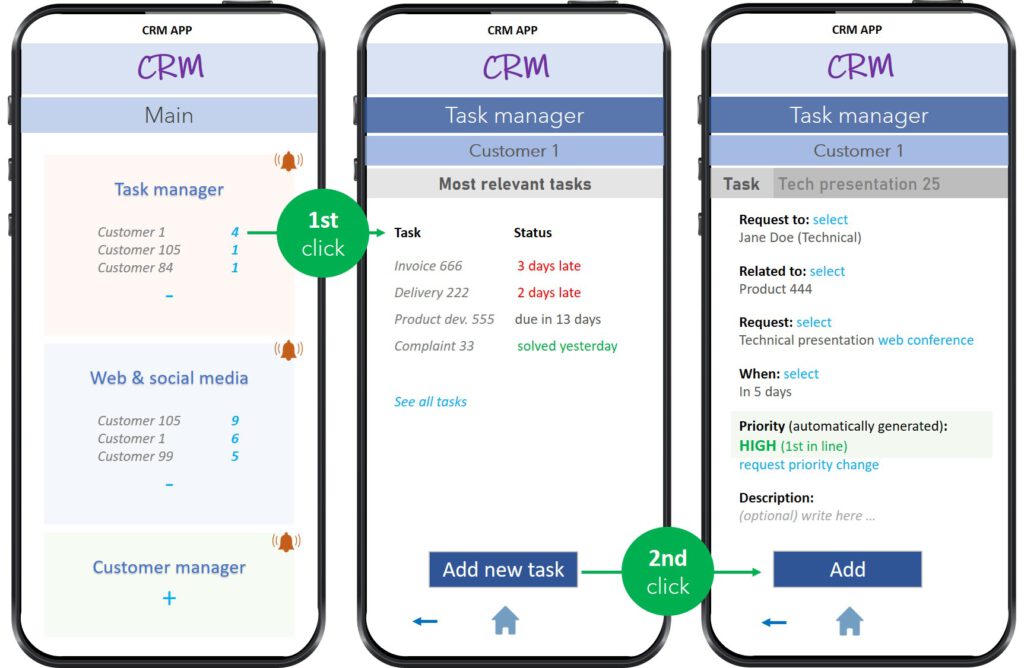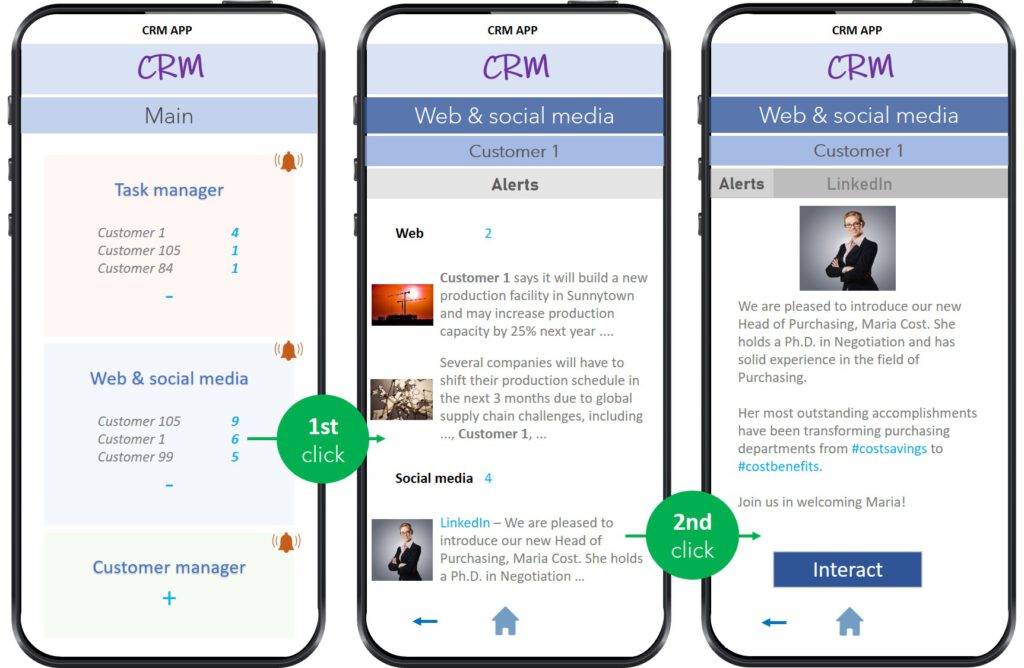It’s such a beautiful day for a sales representative when customers give great compliments, when all the necessary information is available in just a few clicks, and when colleagues provide brief, concise, and organized updates about interactions with customers!
Have you ever had a day like this?
Such a day is possible, and already experienced by many salespeople. Check out this article about the capacity to delight your customers and see it with your own eyes!
First, consider if you are facing one or more of these challenges:
- Sales teams are not timely aware of every customer interaction with other areas of your company.
- Important customers are unhappy with your response time.
- Customer information is unstructured and scattered.
If one or more of these challenges sounds familiar, you’re probably also failing to delight your customers. This is most likely because your salespeople are wasting too much time on tasks that can be digitalized and automated.
Enough face-time with customers is one of the main reasons for customer satisfaction. Let’s start below with one of the nightmares of sales teams: Investigating who did (or didn’t do) what with their customers and when.
1. Sales teams are not timely aware of every customer interaction with other areas of your company.
The claim that sales teams should be aware of every customer interaction with other areas of your company seems exaggerated. Maybe it’s not, but if you’re thinking of dozens of e-mails to let them know about interactions, you’re right. The problem is not in the amount of information, but in the method.

Imagine that your sales representative wants to contact a customer. A prudent sales rep will first check to see if there is anything new about it, such as a new inquiry from the customer’s production department, whether the product delivery went well, or whether an invoice was sent at the right time. In many cases, there are a large number of interactions between your company and the customers, from many different departments and, in today’s world, on digital channels, too.
So, unless all the interactions between your company and your customer are centralized and managed by a task management system, sooner or later the salesperson will either waste a lot of time following up with the entire company or get into a difficult situation with the customer.
With the user-friendly and intuitive CRM technology available today, most customer interactions can be captured in a matter of seconds (two to five clicks) without the need for any writing.
Thus, with just a few clicks, your sales representative can use a smartphone to check if any relevant information about the customer requires special preparation so as to not jeopardize the sale. Moreover, the task management system can warn about approaching or already overdue deadlines. Your customers will also appreciate that your sales teams care about them and are not just trying to make more sales.
2. Important customers are unhappy with your response time.
Not all customers and opportunities are the same, and not all customers deserve the same level of service. If you try to do everything for everyone, you will end up making your important customers unhappy.
Every week, and in some companies every day, dozens or hundreds of requests come in from different customers. They are fighting for resources from the same departments, such as supply chain, product development, technical support, finance, and others. The biggest challenge is prioritizing customer requests so that you can focus on the customers with the greatest long-term potential and opportunities.
You can use basic CRM task management features and configure them to prioritize incoming customer requests. Tasks should be prioritized according to your strategy, and there are two basic methods to translate your strategy into a ranking system.
First is customer segmentation (please see the article about customer segmentation for a deeper understanding), a methodology that tells which customers are more important. Second is the sales funnel (please see the article about the sales funnel for a deeper understanding). The funnel ranks the leads, opportunities, and customers based on the chance to win business.
When you combine the customer segmentation and sales funnel information, you get a methodology for prioritizing tasks that will keep your important and loyal customers happy. Of course, if you think the priority is wrong, you can change it manually. With a little analytics, the CRM can tell you if manually adjusting priorities is paying off.

For a sales representative, there is nothing more beautiful than seeing that the important and loyal customers are delighted!
3. Customer information is unstructured and scattered.
Think about the reasons why you want to drive digitalization in your business. If the main reason is not to serve your customers better, then reconsider it. CRM is the center of customer information and should therefore be at the heart of your digitalization process.
The digital world requires quick, comprehensive, and accurate responses to customer inquiries. If you go digital and start interacting with your customers without organizing your internal methods and systems to serve them, it can have the opposite effect you expect.
How many systems should your sales teams use to serve your customers? If you answer the question with more than one system, you will miss the opportunity to provide a clear customer view to your sales teams, waste a significant amount of their time, and ultimately provide a suboptimal experience to your customers.
So far, we’ve only talked about internal systems. However, the digital world is much broader than that. Your customers are active on social media. News about them, their industry, and their market is often posted online. All of this should also be part of the 360° view of your customer in CRM. With a maximum of three clicks on a mobile device, your sales representatives should be able to get an overview of the most important internal and external factors affecting their customers.

Free up your sales teams’ time by giving them quick access to all the information they need so they can focus on what matters most, their customers! CRM makes the sales rep’s day and the customer’s day beautiful – and, ultimately, yours too!
Contact KRAEMER to further improve your capacity to delight your customers.

Caio Kraemer is a professional with more than 10 years of practical experience implementing and managing Sales Excellence projects in Germany and globally. His 25 years of experience extend to several industries, market structures, consumable and durable goods. The success of his projects is based on passion, pragmatism, know-how, perseverance and change management.



© KRAEMER Sales Excellence Consulting GmbH